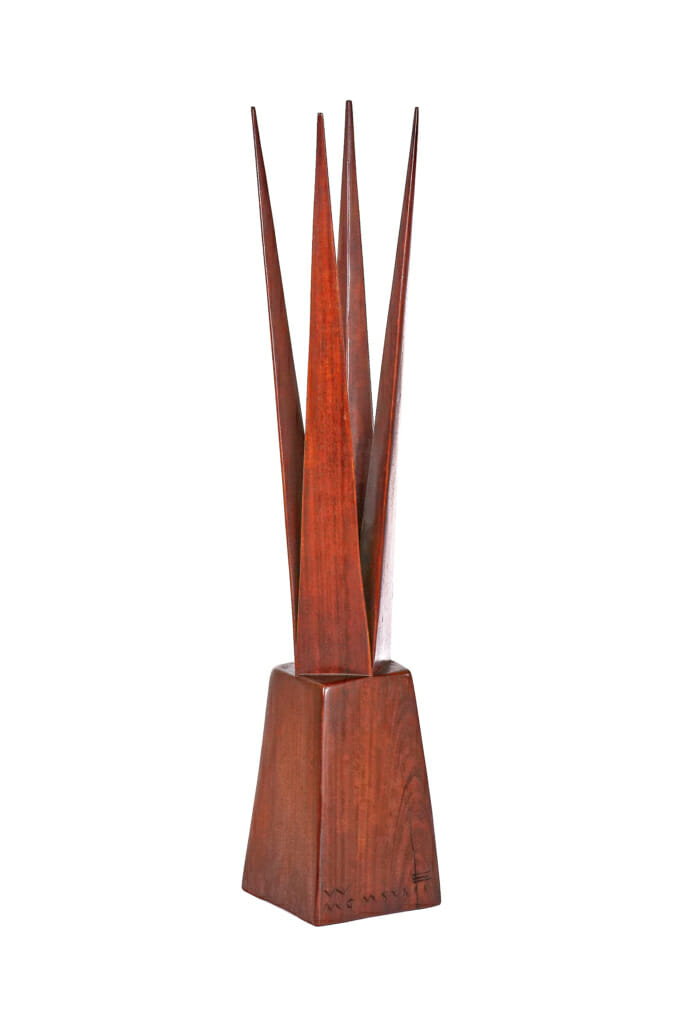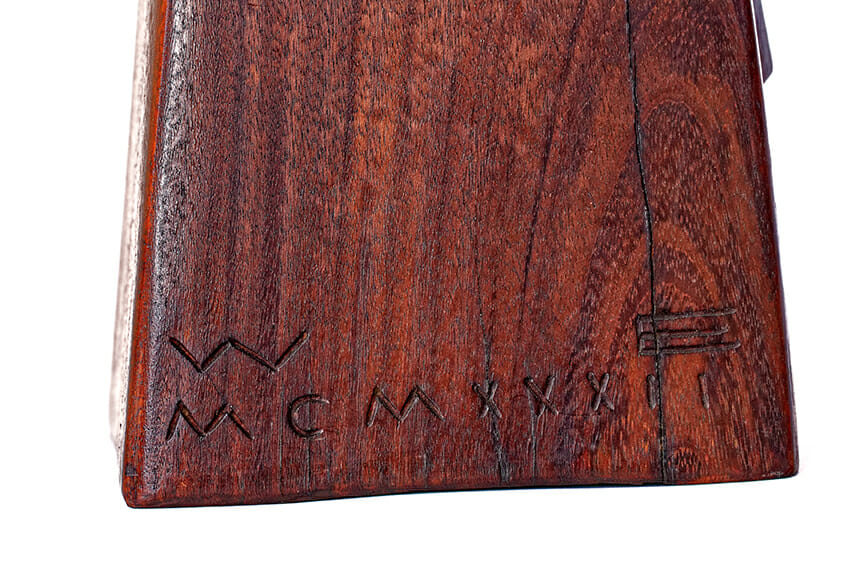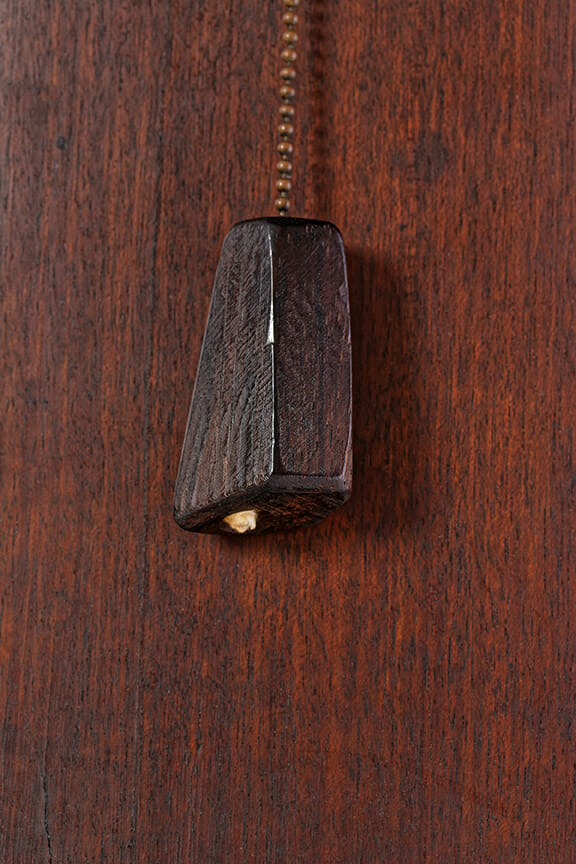Table Lamp
Wharton Esherick
1932
Padouk
30 inches high
Collection of the Wharton Esherick Museum
Images courtesy of Eoin O’Neill
This Table Lamp is one of the earliest examples of Esherick’s lifelong interest in using lighting to enliven his work — and not just when designing lamps. This lamp (along with a companion made in 1931) were produced shortly after Esherick’s transformative trip to Germany to study Expressionist sculpture in 1930, and reflect the sharp geometry and forceful lines of much of his work at the time. Rather than use a traditional shade, Esherick has designed four external elements that taper to a point to surround a bare-light bulb nestled inside. This squared construction is set on the base at an angle, lending the whole composition a sense of perpetual motion and instability.



